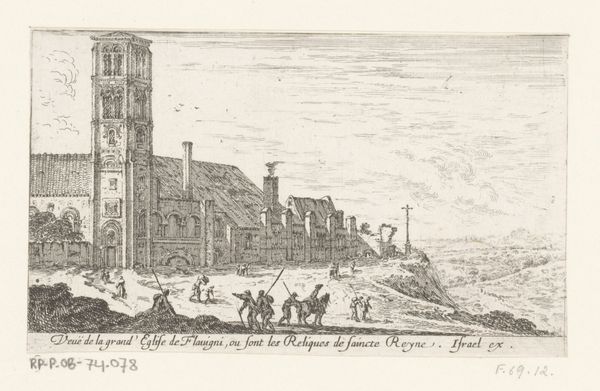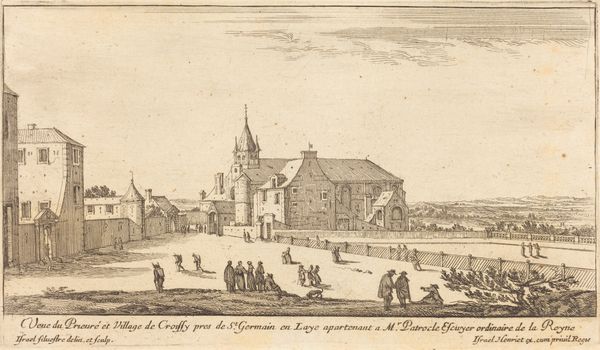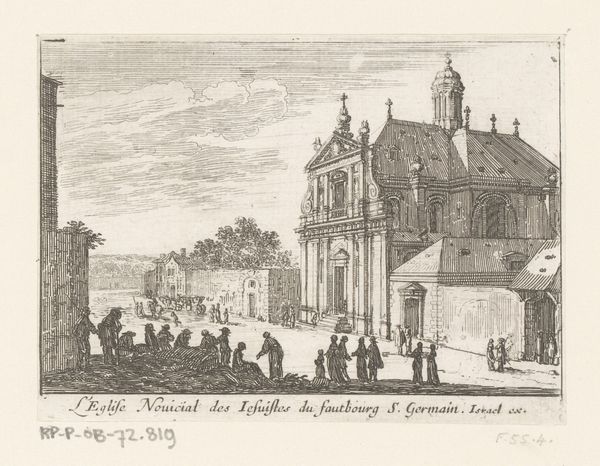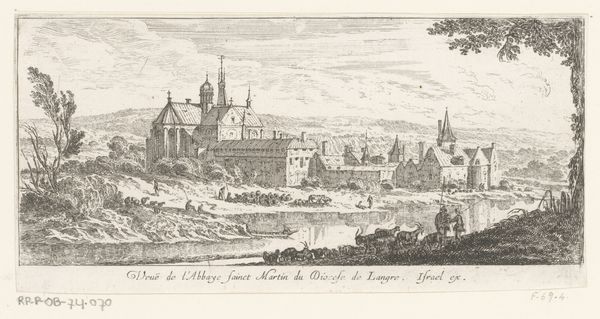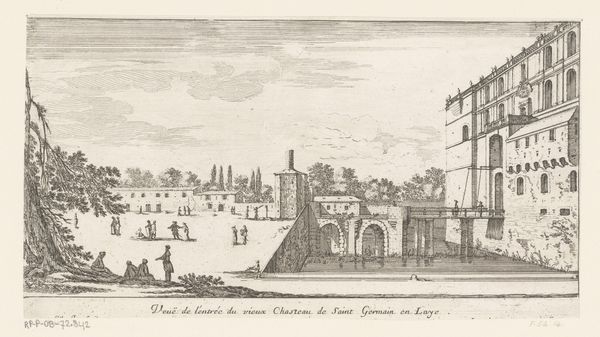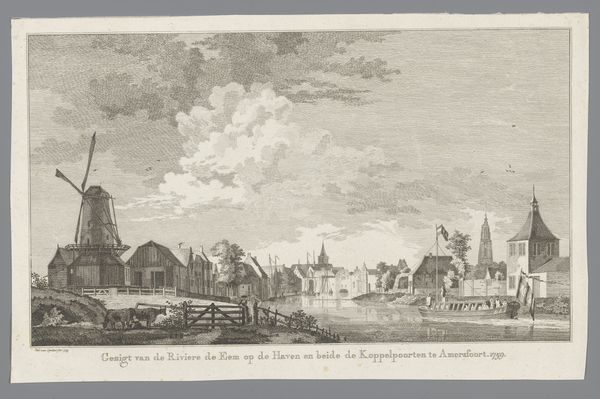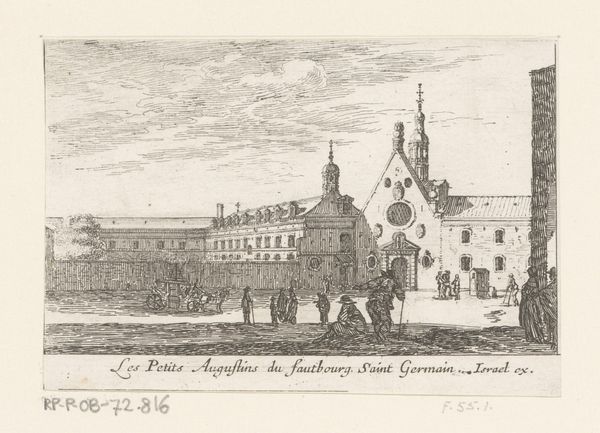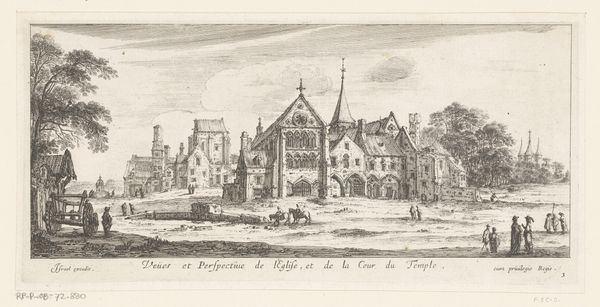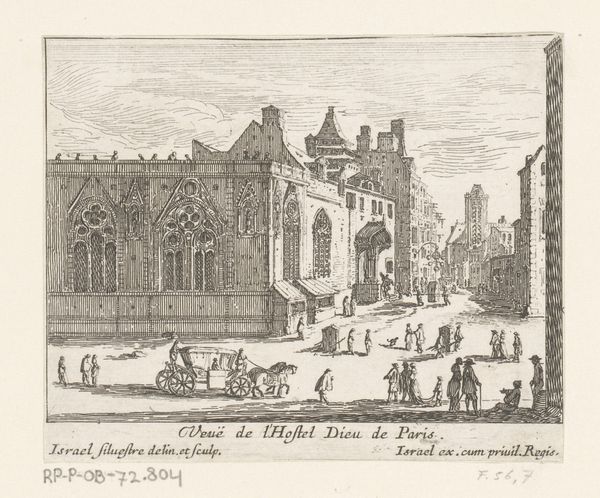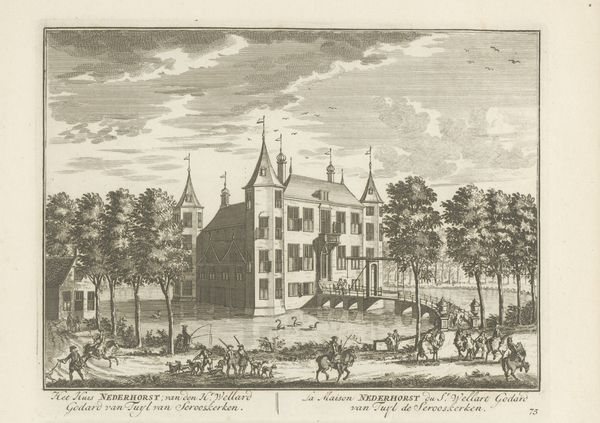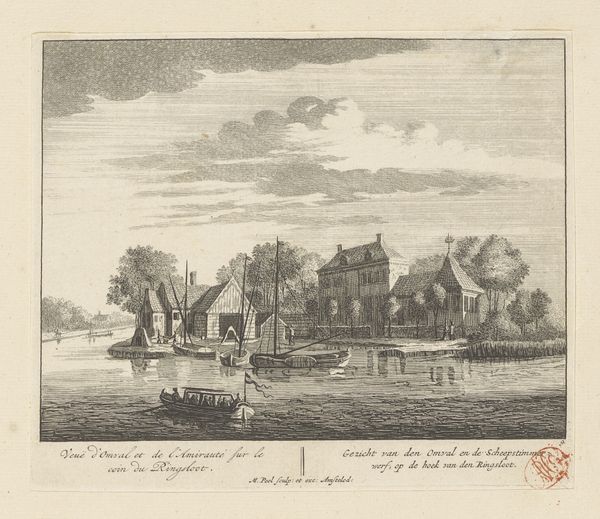
print, etching
#
baroque
# print
#
etching
#
old engraving style
#
landscape
#
cityscape
Dimensions: height 81 mm, width 116 mm
Copyright: Rijks Museum: Open Domain
Curator: Let’s take a look at “Gezicht op de kerk van Saint-Germain-en-Laye,” an etching made sometime between 1631 and 1661 by Israel Silvestre. Editor: It has this very calm, organized feeling, but I am also picking up this sort of eerie, cold atmosphere with all those crisp lines in black and white. It almost feels like peering into the past, doesn't it? Curator: It does. This piece really offers a fascinating glimpse into the public role of architecture in the Baroque period and how it reflects the social and political currents. Consider the figures populating the scene. Editor: They seem like little dark scribbles down there in contrast with the dominating edifice that looms over them, all walking about and enacting daily rituals with complete disregard of how their activities relate with the grandeur of the religious monument that presides over the public square. Are we talking about an erasure of individuals? Curator: Perhaps it is a suggestion that religious architecture exerts an omnipresent but unspoken authority on public life during that period, quietly imposing order through spatial planning and religious representation. What's your read? Editor: I’m looking at how Silvestre’s choices regarding medium and composition might speak to a patriarchal construction that suppresses diverse gender identities by glorifying monumental power structures that favor certain groups above others. Curator: An interesting way to think about it is to consider how representations of religious and political structures—especially when made widely available through print—become tools for either upholding or subverting prevailing narratives. Editor: So, by making images of the Church widely available, he’s both reinforcing its symbolic power and potentially making it accessible for questioning within a wider public sphere? Curator: Precisely. It’s all a game of power dynamics played out through images. Editor: I am thankful for the insight and awareness Silvestre’s cityscape sparks, urging all to examine and question what it is that a certain historical work signifies to a contemporary audience today. Curator: Indeed. His Baroque architecture can provoke a reflection upon today’s world, on the intricate relationship between space, power, and social order, whether you like to question or promote change.
Comments
No comments
Be the first to comment and join the conversation on the ultimate creative platform.
